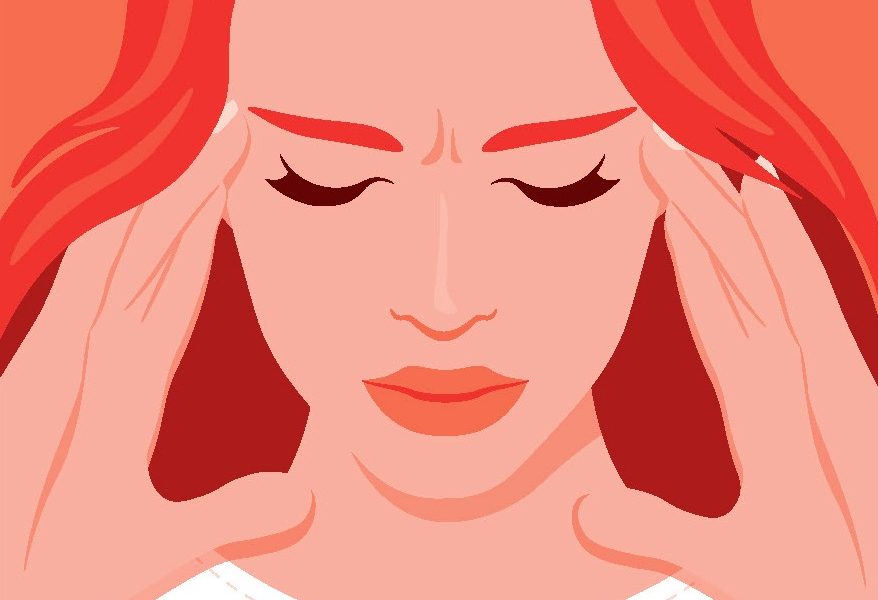Migraines are a real pain (pun intended) and they can leave you blindsided if you’re not sure how to deal with an attack. Our experts reveal how to defend yourself when one strikes
Whether you’re a regular sufferer or have been lucky enough to escape the feeling of when a migraine takes hold, most of us can say that we’ve had symptoms that are similar. But what’s the difference between a headache and a migraine? Can your eyesight be affected when you get a migraine, and does a daith piercing really help to alleviate symptoms? We’ve called in the experts to find out what you should be looking out for and to help you to see clearly when it comes to migraines.
What is a migraine?
“In neuroscience terms, a migraine is a ‘disorder of central sensory processing’ or, in non-medical language, ‘incorrect signals within the brain’,” explains Dr Ben Turner, consultant neurologist at London Bridge Hospital (drbenturner.com). “I like the computer analogy: anything as complex as the brain will occasionally have an incorrect transmission, hence computer freeze and need to reboot.”
What symptoms should I be looking out for?
“It’s useful to think of the four stages [see right] that make up a migraine,” advises Dr Alka Patel, GP, health coach and lifestyle medicine physician (dralkapatel.com).
What are the different types of migraines?
“The two major categories are migraine with aura, which occurs in 20 percent of sufferers, and migraine without aura, which is more common, but underdiagnosed,” explains Dr Turner. “Aura is usually a visual disturbance in both eyes lasting about 20 minutes before the headache begins.”
Remember pain
P: Prodrome
This is a mood change hours or days before the headache. For example, feeling irritable, angry, stressed or tired.
A: Aura
This usually happens just before the headache. Each aura symptom (there can be more than one) can last from 20 minutes up to an hour. It typically affects vision, with zigzag lines or light patterns, but can also include numbness, dizziness, paralysis, speech difficulty or memory loss.
I: Intense headache
This is usually a throbbing, thumping or pulsing pain. It can affect any part of the head, including the face or the neck. It can last hours or days, typically between four to 72 hours.
N: Neutralisation
This is returning to a steady state or the recovery phase, which can take a day or two.
Migraine types and the symptoms
Dr Steve Allder, consultant neurologist at Re:Cognition Health (recognitionhealth.com), says:
Migraine with aura:
Sensory and visual disturbances, such as blind spots in eyes, zigzags, numbness, dizziness, tingling or vertigo
Migraine without aura:
A throbbing head pain (made worse by physical activity) and other symptoms of migraine
Silent migraine (without pain):
Dizzy aura, nausea, visual disturbance and other symptoms of migraine without any head pain
Retinal migraine:
Loss of vision in one eye, which can last minutes or months
What is the difference between a headache and a migraine?
The main difference is that migraines are usually experienced as ‘attacks’ with additional symptoms, while headaches are not normally associated with specific further symptoms,” says Dr Alka Patel. What kind of symptoms can we expect from a headache? “Any abnormal feeling in the head,” states Dr Turner. “Around 99 percent of the time it’s unpleasant, but harmless. However, severe abrupt onset headaches can be a sign of brain haemorrhage.”
What can I do when a migraine strikes?
“Making lifestyle adjustments, such as decreasing stress, increasing sleep, reducing alcohol intake, drinking at least two litres of water per day and reviewing your diet can help improve and ultimately eliminate the onset of a migraine,” explains Dr Allder.
Migraine myths
Dr. steve Allder says:
Myth: A migraine is just a headache.
Fact: “A migraine is a neurological condition, which can be debilitating for those who experience them,” explains Dr Allder.
Myth: You must have an aura to have a migraine.
Fact: “Not all migraine sufferers will experience an aura.”
Myth: A daith piercing will help to cure a migraine.
Fact: “A daith piercing is based on the acupuncture principal, which targets specific parts of the body with needles to activate a pressure point. This won’t work for everyone, but some people have claimed to find relief.”
Treat each stage of pain
Dr Alka Patel advises:
P : Prodrome (hours or days before the headache)
Look out for:
- 4 Mood Changes
- 4 Irritability
- 4 Food cravings
- 4 Dizziness
What can you do?
- 4 Keep hydrated
- 6 Minimise caffeine in coffee, tea, fizzy drinks and chocolate
- 6 Avoid alcohol, especially red wine
- 4 Keep to a regular sleep pattern
- 6 Reduce prolonged computer use
A : Aura (just before the headache)
Look out for:
- Visual symptoms, such as patterns, zigzag lines and blackness
- Hearing symptoms – do sounds seem louder than normal?
What can you do?
- Take medication for migraine early and keep medication with you at all times. Aspirin or ibuprofen may be more helpful than paracetamol or codeine
- Take a ‘triptan’. This relieves pain by narrowing blood vessels in the head and stopping the transmission of pain
I : Intense headache
Look out for:
- An intense throbbing or pulsating headache
What can you do?
- During a migraine attack, the stomach can slow down, so medication is not well absorbed. Try dissolving painkillers in water
- Take a combination of a triptan, plus domperidone and either aspirin or ibuprofen at the start of the attack, rather than one after the other over a few hours
- Seek out a quiet, dark room for sleeping
N : Neutralisation
Look out for:
- 4 Fatigue
- 4 Low energy
What can you do?
- The three Rs: Rest, recuperate and re-establish your routine



















